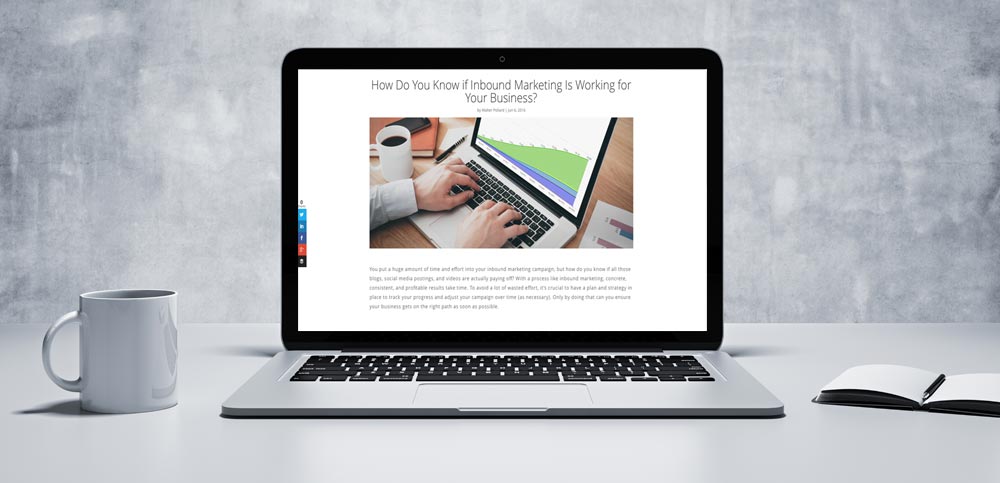Inbound Markeitng Alone Will Not Solve Your Lead Generation Problems

Inbound marketing is an incredibly powerful and effective tool at the disposal of your business, but the question remains: Is it sufficient for the entirety of your marketing efforts? Businesses and marketers alike agree that rather than focusing exclusively on inbound marketing (or outbound marketing, for that matter), the more well-rounded and ultimately successful approach is “all-bound marketing,” which is a collaborative balance between inbound and outbound techniques.
Strive for All-Bound Marketing: The Combination of Inbound Marketing and Outbound Marketing
Why Is Inbound Marketing Alone a Dangerous Tactic?
Salespeople are always talking to your customers and potential customers. It’s a necessary part of the job. This means salespeople have unique insight into what your customer base needs and wants. They know your customers’ challenges, barriers to success, goals, and so on.
Inbound marketing is extremely effective for what it’s meant to do, and that’s largely lead generation and lead nurturing through the buyer’s journey. By and large, this means customers are seeking you out, which is, of course, a positive.
However, there is a potential downside. When customers are exclusively finding you in this way, they might not always be your ideal customers. That means they might not be interested in the products or services you’re interested in focusing on, or they might not be interested in repeat business with you.
Whatever the case, all of this can lead to high levels of customer churn, which can be costly for you—both in terms of finances and more intangible resources, such as time and effort.
When you take a more holistic all-bound approach, though, you harness the power of inbound marketing but incorporate the targeted benefits of outbound
So, What’s the Ideal Balance between Inbound Marketing and Outbound Marketing?
This is the hardest part to pinpoint because there isn’t a coverall answer for all businesses. The balance that’s ideal for you isn’t necessarily ideal for a different industry (or even a different company within your industry).
The amount of inbound versus outbound varies across the spectrum, but for your ideal success, recognize that some combination of inbound and outbound is going to yield better results than exclusively one or the other.
From there, it’s a matter of using your company goals and assessing which techniques will help you accomplish those goals with the greatest efficiency and success.
Whether you’re working alone or with an inbound marketing agency, make sure the focus is always on aligning all inbound and outbound efforts. This way, the techniques aren’t ever at odds or working independently. They are a collaborative effort to get you more of the right kinds of clients and increase your revenue stream.
Inbound Marketing Techniques to Utilize
Inbound marketing is largely about producing strategic content with search engine optimization (SEO) for greater visibility and success.
The most popular methods include the following:
- Organic SEO
- Blogs
- Premium content (e.g., e-books)
- Social Content
- Visual content (e.g., video, webinars and more)
- Podcasts
Outbound Marketing Techniques to Utilize
At its core, outbound marketing essentially tells people about your company. Popular tactics include the following:
- Pay per click (PPC)
- E-mail marketing
- Press releases
- Direct Mail
- Cold Calling
- Trade shows and/or conferences
Remember, these tactics don’t always fall squarely in either the inbound or outbound category. They can incorporate elements of each technique.
For example, say you have a unique offering. You could send a potential client something tangible directly in the mail that then generates legitimate interest and drives that person to take action, such as visiting your website to learn more about the offering.
Once that person has visited the site, you can pull all kinds of analytics about him or her, including what site pages were visited, what information was requested or downloaded, and more. In this way, direct mail can act like an outbound version of a call to action, thus incorporating both inbound and outbound techniques to drive your revenue.
Account-Based Marketing: What It Is and Why It Matters to an All-Bound Approach
Account-based marketing is essentially being as specific as possible in the targeting of your buyer personas. For example, say your target audience is dentists. Rather than marketing to that very broad category (and risking the attraction of customers who might be costly and time-consuming for you), you can drill down to only dentists who offer a specific product, such as Invisalign.
By using all tactics at your disposal (an all-bound approach), you can more effectively target those highly specific ideal clients.
Throughout this process, you can even further facilitate lead nurturing by employing sales development. This involves an employee who can bridge the gap between marketing and sales. Therefore, if a lead is past the point of dealing with marketing but not yet ready to speak to sales, the lead can communicate with this person until he or she is transitioned to a sales-qualified lead (SQL).
As with every department, sales development should strive for a seamless incorporation of both inbound and outbound techniques.
When done correctly, inbound marketing is hugely effective at generating leads and then nurturing those leads toward the bottom of the sales funnel. However, inbound techniques alone are usually not enough to close a sale.
That’s why all-bound marketing (a combination of inbound and outbound techniques) is so desirable. Inbound marketing can get you those invaluable leads, and integrating outbound strategy can facilitate converting them into paying customers
Learn how to increase marketing and sales productivity by developing a predictable, gowning sales pipeline through inbound marketing and sales enablement.


